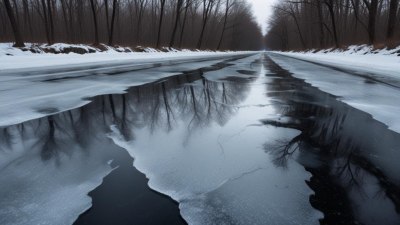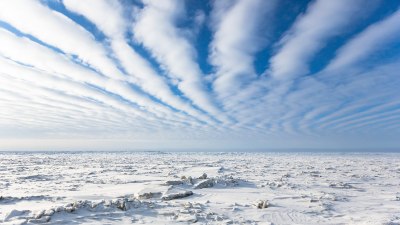The Science of Black Ice and Why It’s Nearly Invisible
Discover the science behind black ice, how it forms, and why it poses a hidden danger on the roads.

This image was created with the assistance of Freepik
Black ice is one of the most treacherous conditions that drivers can face during winter months. It is almost invisible to the naked eye, leading to numerous accidents annually. Understanding the science of black ice, its formation, and the dangers it presents can help individuals better prepare for and navigate winter driving. In this article, we will delve into the physics behind black ice, explore its causes, and discuss how to stay safe on slippery roads.
What is Black Ice?
Black ice refers to a thin layer of ice that forms on roadways, rendering them extremely slippery and hazardous. Unlike regular ice that has a white appearance due to air bubbles trapped within, black ice is transparent. This transparency allows the road surface to show through, making black ice very difficult to detect. It typically forms during specific weather conditions, particularly at night or in the early morning when temperatures dip and moisture can freeze.
How Black Ice Forms
Black ice primarily forms under certain conditions. The most common scenarios involve humidity and temperature changes. For example, when rain falls onto cold asphalt, the water can freeze rapidly, creating a thin glaze of ice. Similarly, in the absence of sunlight during the night, dew can form on the road surface. If the temperature falls below freezing, this dew can freeze into a thin layer of ice.
Another common scenario refers to the phenomenon known as 'freezing rain.' In this situation, raindrops fall through a layer of warm air before hitting the ground, where temperatures are below freezing. The raindrops freeze upon contact with the cold surface, quickly forming black ice. Due to its nearly invisible nature, drivers may not realize they are driving over black ice until it is too late.
Where Black Ice is Most Likely to Occur
Black ice can occur in various locations but is most commonly found in areas that experience rapid temperature changes or in shaded spots where sunlight does not reach. Typical locations include bridges, overpasses, and areas with poor drainage. Roads that are frequently shaded by trees, buildings, or other structures are also prone to developing black ice, especially during the transition from day to night.
Identifying Black Ice
Identifying black ice can be challenging due to its transparent nature. However, there are indicators that drivers can look for. For example, if the road appears shiny or reflective, it may be an indication that black ice is present. Additionally, drivers should be cautious on roads that have been wet recently, particularly if the temperature is hovering around the freezing mark. When driving in winter conditions, it is critical to reduce speed and stay vigilant in order to react to potential hazards.
The Dangers of Black Ice
The dangers of black ice are significant. Due to the lack of visibility, drivers often underestimate the risks associated with black ice. Vehicles can lose traction suddenly, leading to skidding and potential accidents. Additionally, the thin nature of black ice can result in falls and injuries for pedestrians if they are unaware of their surroundings. Reports of accidents linked to black ice spike in winter months, often resulting in serious injuries or fatalities.
How to Drive on Black Ice
When faced with black ice while driving, it's important to take precautions to minimize accident risks. Here are a few tips:
-
Reduce your speed and maintain an increased following distance. The lower your speed, the easier it is to control your vehicle.
-
Avoid sudden movements. Abrupt steering or braking can lead to loss of control.
-
Use gentle, steady movements when accelerating or braking to maintain traction.
-
If you begin to slide, remain calm and steer in the direction of the slide, allowing the vehicle to regain control.
-
Stay informed about road conditions by listening to weather reports and checking for warnings related to black ice.
Black Ice and Vehicle Maintenance
Maintaining your vehicle properly can also help minimize risks associated with driving on black ice. Proper tire inflation and tread depth are critical for winter driving. Ensure that your tires are suitable for winter conditions, as this can greatly affect traction. Additionally, keeping your windshield wipers in good condition will ensure better visibility during icy weather.
The Role of Climate Change
Interestingly, climate change has been linked to an increasing number of unpredictable weather patterns. Warmer winters can lead to more frequent rainstorms during cold weather, increasing the likelihood of conditions that allow black ice to form. Furthermore, fluctuating temperatures can result in cycles of thawing and freezing, compounding the likelihood of black ice on roadways. As we navigate these changing conditions, it becomes even more vital for drivers to stay informed and take precautions.
The science behind black ice explains why it is such a notorious hazard for drivers. By understanding how black ice forms and the conditions that lead to its development, drivers can be better prepared to recognize and navigate their presence. Safety on icy roads comes from awareness and preparedness, which can ultimately save lives during treacherous winter conditions. This winter, stay informed, stay cautious, and drive safely!











